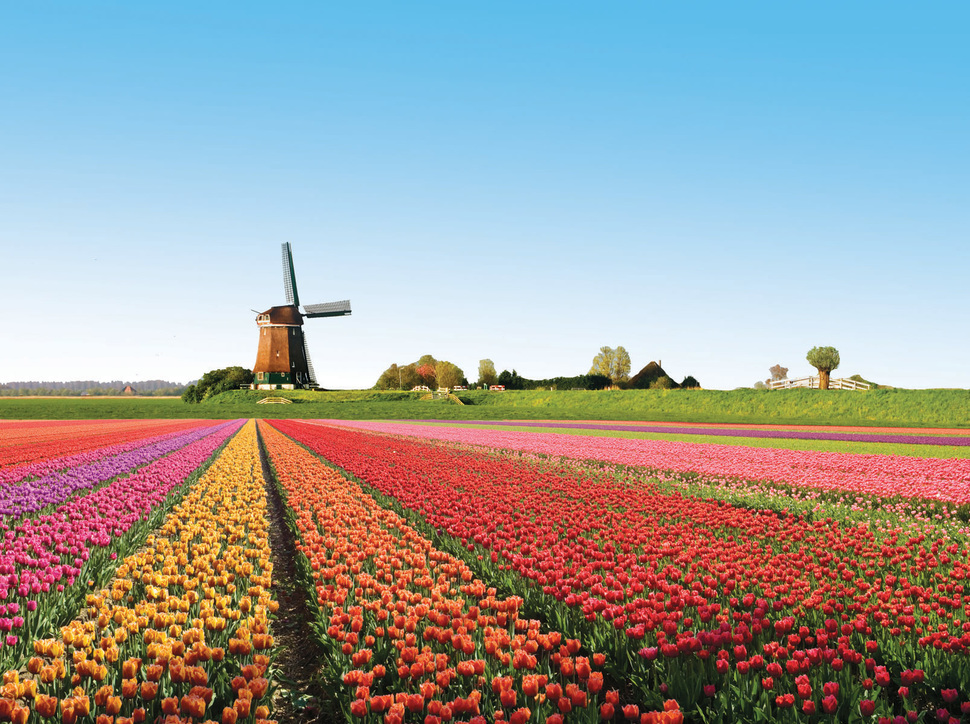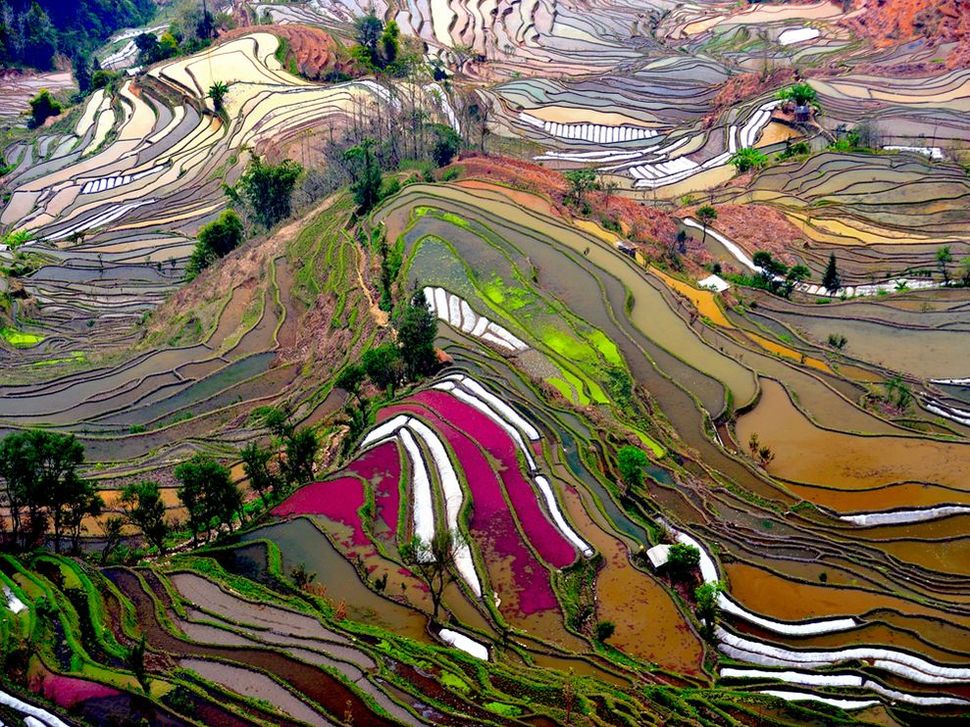1. Tulip Fields of The Netherlands
The Netherlands are known for its tulips and is known as the “flower shop of the world.” Tulips are grown in giant fields of vibrant colors and tulip festivals are held throughout the country when they are in full bloom in spring.
2. Grand Prismatic Hot Spring,Wyoming
The Grand Prismatic Spring in Yellowstone National Park is the largest hot spring in the United States, and the third largest in the world. It is located in the Midway Geyser Basin and named for its striking coloration.
3. Caño Cristales, Colombia
Located in the Sierra de la Macarena and commonly called “The River of Five Colors,” Caño Cristales is a site to marvel. The bed of then river in is an explosion of colors from the end of July through November. The culprit: Macarenia Claveigera, an indigenous plant that grows along the riverbed’s floor. When it comes into bloom it exhibits a flashy display of colors, including shades of yellows, greens, blues and most famously reds.
4. Five Flower Lake – Rize Valley, China
The clear turqoise waters of Wuhua Hai, or Five-Flower Lake, is one of the most beautiful spots in Jiuzhaigon National Park. This pristine lake is somewhat shallow and its floor is scattered with fallen ancient tree trunks.
5. Lavender Fields – Provence, France
The famed lavender fields of Provence, France bloom in summer. Travellers best seek blooming lavender in June up through August for mesmerizing purple and violet views.
6. Lake Hillier – Middle Island, Western Australia
Lake Hillier is about 600 meters long and surrounded by a dense forest of Eucaluptus trees. Scientists still debate on the origin of the lake’s unusual pink color. One theory suggests the color comes from a byproduct of the microorganisms that thrive in its waters. Another theory points to the red bacteria dwelling in the lake’s salt deposits. Lake Hillier’s location is completely uninhabited and the lake can only be observed by air.
7. Mendenhall Glacier Caves – Juneau, Alaska
About 12 miles from downtown Juneau, Mendenhall Glacier is approximately 12 miles long. In the summer of 2014 it experienced drastic melting and partial roof collapses. Officials are currently warning tourists and hikers against visiting the glacier due to its unstable conditions.
8. Pammukale, Turkey
Meaning “Cotton Castle” in Turkish, Pamukkale (pronounced pah-MOOK-kah-leh) is Turkey’s most popular natural mineral spa an located in the Denizli Province of southwestern Turkey. These stunning travertines of hard, brilliantly white calcium carbonate and limestone pools are the result of the hot mineral rich waters springing from the earth and dripping over cliffs. The ancient Romans built the city of Hierapolis around its healing waters thousands of years ago and its remains still exist there. Today tourists may bathe for an admission of about $12 US and this includes entry to Hierapolis.
9. Rice Field Terraces – Yuanyang County, China
Listed as a World Heritage Site in China, the stunning rice terraces of Yanyang County, are viturally untouched by the tourism. Running alongside the Red River (which can be seen at the very left in the photo) , these terraces were carved by hand by the Hani people about 1000 years ago.
10. Moraine Lake – Alberta, Canada
Located in the Valley of the Ten Peaks, Moraine Lake is a glacially-fed lake in Banff National Park. The intense blue color of the lake is the effect of light refracting off rock flour and silt deposited by melted glacial waters. The blue color is strongest in the summer months beginning in mid June when the lake begins to thaw.
Better Living uses affiliate links. If you make a purchase through them, we may receive a small commission (for which we are deeply grateful) at no cost to you.
















